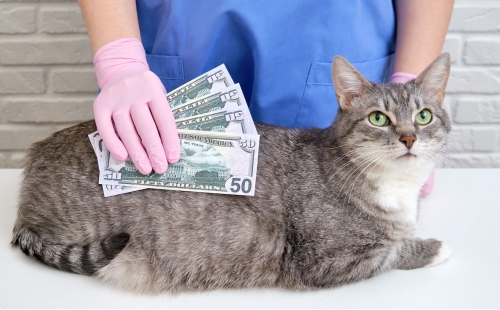6 Veterinary Pricing Mistakes That May Be Hurting Your Practice

Pricing is a tricky aspect of veterinary practice management. Your prices reflect the value of your services and your team’s skills and directly impact hospital profitability, but they must also remain affordable for clients.
Here are six potential veterinary pricing mistakes that could undermine your success, and how to address them in a sustainable way.
1. Relying on old markups
Cost-based pricing relies on calculating the actual or estimated cost of something to the practice and applying a markup formula. This classic pricing strategy works well for retail items, dispensed medications, and prescription food, provided you have an inventory management system in place that accounts for changes in product costs.
Use your cloud-based practice management system or third-party inventory software provider to update costs each time new products come into the clinic so that retail sales prices also adjust automatically. Periodically review pricing formulas and markups, adjusting individual product pricing or categories as needed to ensure an appropriate profit margin without gouging pet owners.
2. Treating services and retail products the same
While a markup approach is reasonable for inventory, it’s less appropriate for medical services. With some time and complex calculations, you can estimate roughly how much it costs to provide a service, but cost and value are two different things.
Value-based pricing shifts the focus from hard overhead costs to what pet owners expect to pay for the expertise and time of a skilled veterinary professional. Clinics can charge more for highly skilled services with high value to a client, and offer lower prices for routine veterinary care that clients expect to pay less for.
3. Failing to adjust for rising costs
In the past several years, supplier costs, wages, and overhead expenses have increased significantly. Using outdated fee schedules that don’t account for these changes is a veterinary pricing mistake that puts pressure on the team to find ways to bridge the gap.
Even during periods of relatively low inflation and stable costs, veterinary practice owners should review overall prices and pricing strategies at least annually to ensure the practice isn’t actively losing money. Small annual changes may be easier for clients to accept than sudden, dramatic increases every few years.
4. Ignoring client price sensitivity
There is often a disconnect between what pet owners believe they should pay and what veterinary clinics actually charge, a gap that becomes more pronounced for higher-cost services, such as dental care or imaging.
A common veterinary pricing mistake is ignoring the price sensitivity consumers feel when faced with pressure from all financial angles. While value-based pricing helps address some client concerns about fair pricing, veterinary teams must also work to communicate the value of their services, rather than assuming clients will understand it.
Veterinary teams should discuss treatment plan costs candidly with pet owners and educate them about the need for and benefits of recommended services, rather than simply handing them an estimate to sign.
5. Overlooking technician services
Most clinics concerned with how staffing and education influence veterinary economics and pricing know that doctor time carries a high premium. However, technician services are also highly valuable to the practice, and you could be making a common veterinary pricing mistake by not charging appropriately for them.
Technician-only appointments are probably part of your daily workflows. But have you factored technician time into other routine services, such as blood pressure measurement, laser therapy, or sample collection? Charging appropriately for technician-led patient care improves revenue growth, supports professional development, and reinforces your practice’s investment in team-based veterinary medicine.
6. Operating without a defined pricing strategy
Some clinics set prices based on feelings without considering hard data. Nobody wants to increase prices for pet owners who are struggling, but what a team member thinks is reasonable or fair may not adequately cover the bills. A lack of a cohesive strategy can lead to confusion and resentment among staff members or clients.
Letting the team in on financial realities can help managers and leaders get buy-in for price changes and reduce resentment. Avoid veterinary pricing mistakes by crafting a policy around benchmarks, goals, and financial performance history, or consider asking for help from a practice consultant to ensure you get it right.
Aligning prices with value
Avoiding common veterinary pricing mistakes is not as simple as an annual price increase or blanket markup. Veterinary teams and leaders must ensure clients understand the value of their services to sustain long-term profitability, team well-being, and overall hospital success.
A thoughtful pricing structure reflects the quality of your veterinary services and your commitment to providing pet care services to the community at a price they can afford. Offering a variety of payment options, including subscription plans, discounted service bundles, and financing options, can also help make care more accessible to those who need it most.



